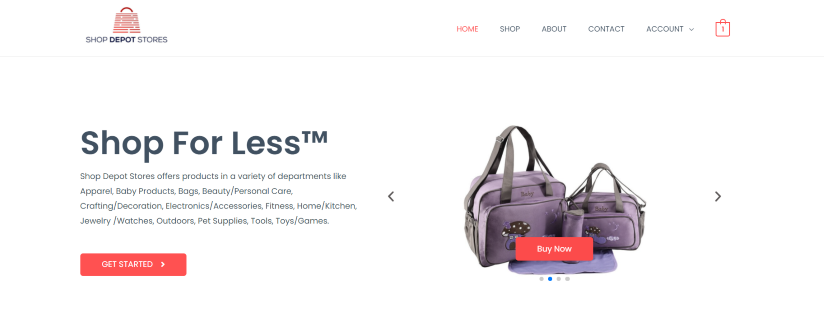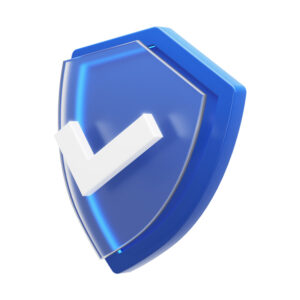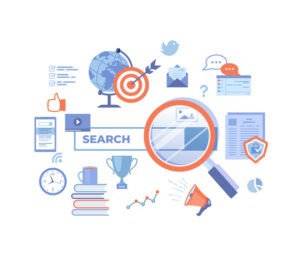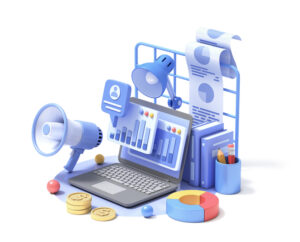The Basics of Ecommerce

Though Ecommerce has been around since the early 90’s with Amazon being the pioneer, the concept gained an extreme traction during the recent years and today is defined as a ‘multi-billion dollar a year industry.’ The phenomenon got even bigger during the pandemic – According to The U.S Department of Commerce, in the first half of 2020 alone, U.S consumers spent 347.2 billion dollars on online shopping, a 30% increase compare to the previous year. It is a no brainer that the world is changing rapidly and is shifting towards a remote lifestyle, so it shouldn’t be a surprise that the commerce world is acting accordingly. While in the past there was a common conception that in order to make a purchase a consumer should visit a physical location and examine the merchandise closely, it will be safe to say that in the modern area, this conception drastically changed, and many people nowdays prefer to shop online in the comfort of their own home.
What is Ecommerce, and what are its pros and cons?
Ecommerce is a process of exchanging goods and services over the internet. Consumers use websites or online marketplaces to purchase products using electronic payments. Upon receiving the money, the merchant ships the goods or provides the service. As a seller, the pros of having an Ecommerce business are obvious:
- Although there are small costs of getting reputable hosts and domains, the initial investment is very low since there are no costs associated with renting or purchasing a physical location.
- there are no employees who needs to get paid, and in many cases (such as Dropshipping which will be explained later) there are no merchandise or storage costs.
- There is no physical limit to goods and services you can offer.
- The business can operate 24/7 on “auto-pilot.”
With that being said, it is very important to understand how to establish and operate this type of business properly, since there are numerous challenges that need to be addressed:
- Sensitivity of storing personal data and credit card information on your database – With hacking, cyber attacks and data breaching volume increasing constantly, it is important to make the most efforts to secure your client’s information and protect it as much as possible. It can be done by using various tools such as advanced SSL certificates, Firewalls and so on. It is also important to display clear privacy policies on your website, so that your clients will be able to get an understanding of how their personal data is being handled and secured.
- Taxes – Your products are being shipped and offered at different locations across the U.S and even the globe. Each country, state, city, and county has different tax rates and regulations, and it is important to comply with them to avoid future problems. If you are not limiting your services to specific areas, it can be a complex task to perform. There are different tools and software that can help to tackle this issue, where the one I like the most is taxJar.
- Competition – As being said, Ecommerce is extremely popular and the competition is huge. Not only you are competing with giants such as eBay and Amazon, it is very likely that you will have other competitors with similar products and ideas. Therefore, it is important to keep your shop to the highest standards. The website needs to be efficient with a smooth user experience, the content should be neat, well-organized and easy to read and mobile optimization should be to the highest order. Optimization is particularly important, since different data suggests that 70-80% of online purchases are made via mobile devices.
- Shipping – sites such as Amazon got customers used to free and 2 days shipping, and this is what many will expect from you. In addition, shipping to different places around the world can get tricky and expensive, and you have to take it into consideration while making your financial plan. For example, you might want to charge more when shipping to certain places or you might decide that you will not allow purchases when the consumer’s destination is unreasonably far. There are also ways to automate shipping charges based on the total amount of the purchase. All of these aspects need to be carefully considered, as making mistakes in them has the potential to significantly impact your profit margins..
Different Types of Ecommerce
- Online Retail – A B2C (business to consumer) type of commerce of selling physical goods online. Amazon is the best example for it, and definitely dominates this market. A good option to consider with this specific concept will be to partner up with companies like Amazon and eBay. Most big companies have affiliate programs where they advertise, store, handle and ship your products for a fee of each sale, while you are responsible to come up with your own products and initially ship it to their storage units.
- Wholesale – A B2B (business to business) type of commerce. In this method, businesses sell in bulk to other businesses. The most dominant names in this field are the Chinese giants Alibaba and Ali Express, though both are also conducting retail sales.
- Dropshipping – Dropshipping has emerged as one of the most prominent and widely adopted business models today. It operates on a straightforward principle: you establish your online platform to showcase an array of products, with product descriptions, images, storage, and shipping handled by a third-party supplier. The industry leader in this field is Shopify. Dropshipping is tracking a lot of popularity recently, due to relatively low costs of establishment, and the connvennience of it. For example, partnering with Shopify, will allow you to establish a complete online store in a matter of a few hours.
- Services and Subscriptions – No physical goods are being offered. Examples are different club memberships and online streaming services such as ‘Netflix‘ and ‘Hulu‘.
- Digital products – should not be confused with services. Digital products are “objects” that exist on a computer, though they are not tangible goods. Examples will be digital art, software (such as Microsoft) and online classes.
- Physical Products – People who sell products that they made, such as art. The most known partnering platform for that is “Etsy.”

To summarize, an Ecommerce business can be a great adventure and a nice source for extra income, but can also be tricky. If you are considering it, do your own research, consult with professionals such as tax accountants, experienced developers and people who have/had this type of business in the past. Make sure you and/or your developer fully understand the various elements and requirements of it. If you choose to do so, I will be more than happy to further discuss the matter.
MORE FROM BLOG

Website Security: Safeguarding WordPress Sites from Emerging Threats
In today’s digital landscape, where websites are crucial for business operations, personal blogs, and online transactions...

What is CDN and what are the benefits of using it
When you get a visitor on your website, the technical process that occurs is that data is sent from your web server to the visitor’s...

Content Marketing and writing a blog – doing it right
The content is often referred as “the king of the web.” Content marketing is a sub-category of SEO (Search Engine Optimization), but in practicality it...

Uncover the Powerful Benefits of Fixing a Slow Website and Boosting Performance
Search engines utilize advanced algorithms to assess website performance. These algorithms test a large amount of parameters, each of which deserve it’s on article. Here,...

6 Powerful Reasons Why Not Having a Website is Hurting Your Business (and How to Fix It)
You have decided you are ready to create a website. Congratulations. During my journey, I came across people who believed that designing a website is...

Create a responsive website – a few easy steps
You have decided you are ready to create a website. Congratulations. During my journey, I came across people who believed that designing a website is...

Digital Marketing Secrets: – How to Crush Your Competition and Dominate Online
Digital marketing involves promoting your business through online channels such as search engines, websites, social media platforms, and mobile apps...


